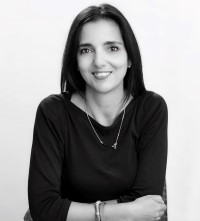In the last few weeks, I have been to an indoor concert at a large concert hall, eaten out at cafes and restaurants a handful of times, caught up with friends at their homes, hosted a family lunch with ten people around a table in our back garden, and visited an art gallery in a regional town.
I live in Melbourne, Victoria and in this state of Australia we have just celebrated 56 days of no new people being diagnosed with COVID-19. I say ‘celebrated’, because each day when our health department releases the new day of covid numbers, there is a sense of relief and joy.
Melbourne was in stage 4 lockdown for over 100 days last year – from July through to October. Stage 4 involved being at home for work and school, only being allowed out of the house for an hour of exercise per day, a daily 8pm – 6am curfew, cafes and restaurants closed except for takeaway, and we were only allowed out to shop for necessary foods and medications. It was, at the time, the longest and most limiting lockdown in the world – not really something that we were particularly proud of, but something that, by and large, the community understood was necessary, and abided by. The freedoms we are enjoying now were hard fought, but they were worth it. The decision from local government was to aim for zero COVID cases which would also mean zero lives lost. We have never had in our heads an ‘acceptable’ number of new diagnoses or deaths that we would accept as satisfactory. Living with the virus and not doing everything we can to stop its spread, means people will die from it. That was simply never going to be allowed in Australia, so zero COVID it was!
That was where we found ourselves for the last couple of months of last year, and with it, those restrictions we’d lived with were eased. Not completely – we now live in what is widely known as ‘COVID normal’, but it is a far, far less restrictive life than we led when we were in lockdown. We really did feel as though we were emerging from hibernation because the lifting of restrictions matched the weather warming up. We could spend us much time in the sunshine as we wanted, lazing on the lawns of local parks, or wandering down to our local cafes to actually sit in and enjoy table service.
I was anxious and nervous, and have continued to be since then, every time I do something new. As much as I have loved being able to see friends and family and get out and about to enjoy all that Melbourne has to offer, there has been a level of fear that simply never leaves.
I am still very risk averse. I continue to wear a mask most of the time I am out of the house, even though the only place it is now mandated is on public transport. I will walk out of a store or a café if I feel there are too many people inside. I choose to sit outside whenever possible; we usually sit out in the garden when we have friends visiting. At Christmas, I decided that I wouldn’t be doing the large family gatherings because it would involve too many people sitting too closely together for too long.
I do think that having lived with diabetes plays into this risk aversion. Reducing risk is somewhat of a mantra that I live and breathe – reduce the risk of diabetes-related complications in the long term; reduce the risk of hypoglycaemia in the short term; reduce the risk of diabetes burnout by being aware of its symptoms. Perhaps thinking like this for over 23 years has held me in good stead for living through a pandemic where risk assessment and mitigation are a consideration.
I think that some of my family and friends are puzzled by my continued concern and anxiety. They don’t understand that even with what seems like the virus having been completely eradicated around why I would continue to feel so anxious. But then, they were not faced with the onslaught of warnings at the beginning of COVID that the only people who needed to worry were older people and those with chronic health conditions. Those messages where just white noise to them because they were not relevant. To me and many people I have spoken to in the diabetes community, they were personal. And the idea that living with diabetes meant that I was high risk lodged itself in my mind and has been there ever since.
But despite all that, I have been making a concerted effort to try to do more. Baby steps have been the way for me, and I am perfectly okay with that approach. My husband and daughter have supported me, wanting to make sure that I feel as safe and secure as possible. In some ways, learning to feel comfortable with venturing out now is reminiscent of learning how to be social after a diabetes diagnosis. Both require us to consider a whole lot of other factors when heading out.
Every day of no new COVID diagnoses relaxes me a little. The couple of times we have been launched straight back into lockdown because there has been a small outbreak has given me confidence that our track and trace capabilities mean that containment will be swift. The way that the community rallies around in those cases, hurries to have a COVID-19 test and isolates until they have the all-clear has reminded me that Melbourne understands how to ‘do COVID’ – my town understands what it takes to beat this virus! And these are the things that reassure me and make me feel ready to claim back a tiny bit of normality by doing something that was once achingly familiar.
Walking into Hamer Hall last week, the grand concert space the Melbourne Symphony Orchestra calls home, was daunting. As with most ‘firsts since COVID-19’, I got a little teary, felt heightened anxiety and wondered if I was taking a miscalculated risk. I thought that as I realised just how different an experience this visit to was to the hundreds of times I’ve previously been there.
We had to check in using the State-based tracing system. There was no standing around chatting with friends in the foyer – we moved straight to the designated door and were directed to our seats. We stood on little spots on the carpet, maintaining 1.5 metres distance from others around us. And when we finally walked into the hall, we sat well-spaced apart. I think the venue would have been at no more than 25 per cent capacity, but the audience was no less appreciative and grateful of the talented musicians performing for us.
When we emerged from the Hall once the concert ended, I felt nothing but joy. A first concert! In a concert hall! With real musicians! What an absolute delight! We wandered through the warm Melbourne night, the city lit up, people flowing through the streets, and it could have been January 2020 – before the world changed for everyone.
I don’t know when I will feel completely safe again – I don’t know that I ever will, to be honest. I look back at photos of pre-COVID times and wonder how we could have been so reckless! Why were so huddled together around a table? Was someone really blowing out candles on a cake that we would all then eat? Why was that person I barely know kissing me on the cheek to greet me? Will those things ever seem okay again?
I can’t answer that. But I do know that the strategies I have put in place to keep me feeling in check are critical for me to feel okay. Putting my own safety first – which, in turn, means those around me are safe – has been essential and I don’t see that changing any time soon. I have become comfortable saying no and guiltlessly explaining why. If people don’t get my need to be super cautious, that is their problem, not mine. I don’t judge them for being less cautious than me. But, if I am really, really honest, I know that I wish that I could be a little more like them.



